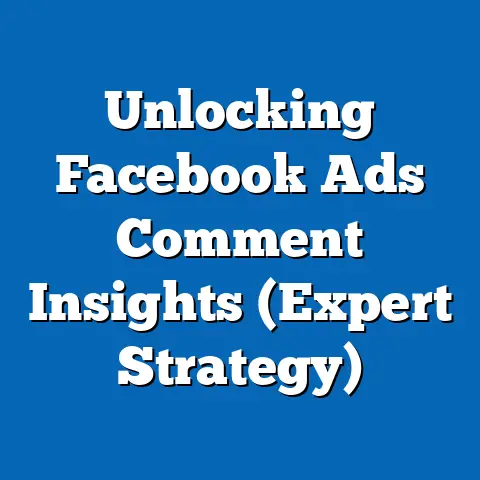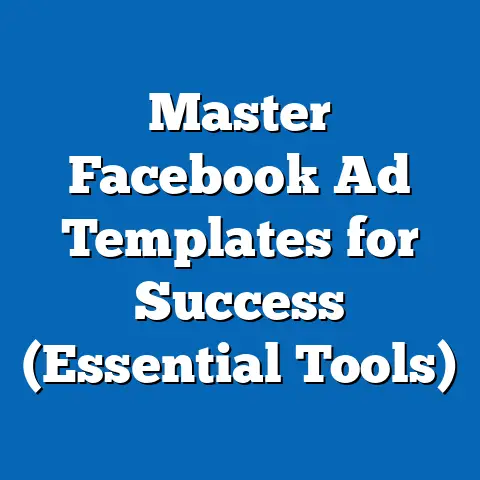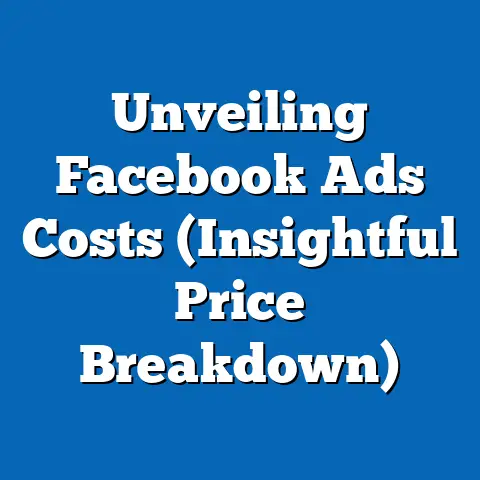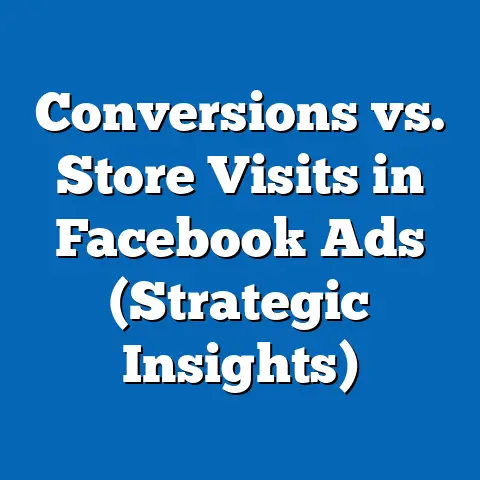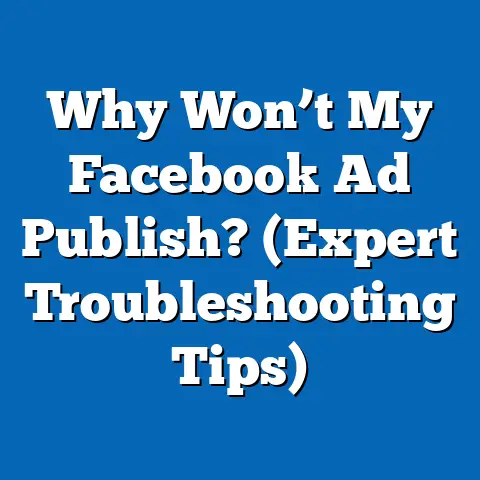Unlock Shopify Facebook Dynamic Ads (Pro Tips Inside)
Picture this: It’s late, and you’re an entrepreneur burning the midnight oil in your cozy home office. Product samples are scattered around, a testament to your hard work and dedication. Your laptop screen glows, filled with analytics graphs that tell a story of potential, but also of the constant hustle. The soft hum of notifications from your Shopify store fills the air, a reminder that the world doesn’t sleep, and neither can you. You’ve just launched a new product line, pouring your heart and soul into every detail. Now, the big question looms: How do you reach the right audience and turn those products into sales?
I’ve been there. I remember the mix of excitement and anxiety, the hope that your carefully crafted marketing messages will resonate, and the sheer determination to make it all work. It’s a rollercoaster, isn’t it?
That’s where Facebook Dynamic Ads come in. They’re not just another ad format; they’re a game-changer for Shopify store owners like you. Think of them as your personalized sales team, working around the clock to show the right products to the right people at the right time. Over the years, I’ve seen firsthand how Dynamic Ads can transform a struggling Shopify store into a thriving online business. And in this guide, I’m going to share everything I know about unlocking their full potential.
In this article, I’ll guide you through the ins and outs of Facebook Dynamic Ads. From understanding what they are and why they’re beneficial to setting them up, creating compelling catalogs, crafting effective campaigns, analyzing performance, and even delving into some pro tips for advanced users, I’ve got you covered. Let’s get started!
Understanding Facebook Dynamic Ads
So, what exactly are Facebook Dynamic Ads? Simply put, they’re ads that automatically promote products to people who have expressed interest on your website, in your app, or elsewhere on the internet. They use your product catalog to show relevant items to potential customers, personalizing the ad experience and increasing the likelihood of a conversion.
Definition and Functionality
At their core, Dynamic Ads leverage Facebook’s powerful algorithms to understand user behavior and match it with your product offerings. The magic lies in the technology behind them:
- Product Catalogs: These are essentially digital storefronts within Facebook, housing all your product information, including images, descriptions, pricing, and availability.
- Facebook Pixel: This is a snippet of code that you install on your website to track user actions, such as page views, add-to-carts, and purchases. It acts as the bridge between your website and Facebook, feeding data to the algorithm.
Here’s how it works in practice:
- A user visits your Shopify store and browses a specific product.
- The Facebook Pixel registers this activity and sends the information to Facebook.
- Facebook’s algorithm analyzes this data and identifies the user as someone interested in that product or similar items.
- Dynamic Ads are then automatically created and displayed to that user, showcasing the product they viewed or related products from your catalog.
It’s like having a virtual salesperson who knows exactly what each customer is looking for and presents them with the perfect offer.
Benefits for Shopify Stores
Now, let’s talk about why Dynamic Ads are particularly beneficial for Shopify merchants. Here are a few key advantages:
- Personalization: Dynamic Ads allow you to deliver highly personalized ad experiences, showing users products they’ve already shown interest in. This increases the relevance of your ads and significantly improves conversion rates.
- Retargeting Capabilities: One of the most powerful aspects of Dynamic Ads is their ability to retarget users who have abandoned their carts or browsed specific products. By reminding them of what they were looking at, you can nudge them closer to making a purchase. I’ve personally seen retargeting campaigns boost sales by as much as 30%!
- Automated Ad Creation: Dynamic Ads automate the ad creation process, saving you time and effort. Once you’ve set up your product catalog and targeting parameters, Facebook takes care of the rest, dynamically generating ads based on the data it receives. This is especially useful for stores with large product inventories.
- Scalability: As your product catalog grows, Dynamic Ads can scale with you, automatically showcasing new products to your target audience. This makes them a sustainable long-term advertising solution.
Real-life Success Stories
Don’t just take my word for it. Here are a few real-life examples of Shopify store owners who have seen success with Dynamic Ads:
- Case Study 1: Apparel Store: A small online clothing boutique used Dynamic Ads to retarget customers who had viewed specific items but didn’t make a purchase. By showing them the exact items they were interested in, they saw a 25% increase in sales within the first month.
- Case Study 2: Home Goods Store: A Shopify store selling home goods used Dynamic Ads to showcase related products to customers who had recently purchased an item. For example, someone who bought a coffee table might see ads for matching end tables or lamps. This cross-selling strategy led to a 15% increase in average order value.
- Case Study 3: Jewelry Store: A handmade jewelry store used Dynamic Ads to target customers who had added items to their cart but didn’t complete the checkout process. By offering a small discount code in the retargeting ad, they were able to recover 20% of abandoned carts.
These stories highlight the power of Dynamic Ads to drive sales, increase order value, and recover lost revenue.
Takeaway: Facebook Dynamic Ads are a powerful tool for Shopify store owners looking to personalize their advertising, retarget potential customers, and automate their ad creation process.
Next Steps: Now that you understand what Dynamic Ads are and why they’re beneficial, let’s move on to setting up your Shopify store for success.
Setting Up Your Shopify Store for Dynamic Ads
Before you can start running Dynamic Ads, you need to make sure your Shopify store is properly set up and integrated with Facebook. This involves a few key steps, including preparing your product catalog, setting up Facebook Business Manager, and installing the Facebook Pixel.
Prerequisites
Here’s a checklist of the prerequisites you’ll need to have in place:
- Shopify Store: Obviously, you’ll need an active Shopify store with products listed.
- Facebook Business Manager Account: This is a central hub for managing your Facebook advertising activities. If you don’t have one already, you can create one for free at business.facebook.com.
- Facebook Page: Your Shopify store needs to be linked to a Facebook Page. This is where your ads will appear and where customers can engage with your brand.
- Facebook Pixel: As mentioned earlier, the Pixel is essential for tracking user behavior on your website. You’ll need to install it on your Shopify store to enable Dynamic Ads.
- Product Catalog: You’ll need to create a product catalog within Facebook Business Manager, containing all your product information.
Step-by-Step Guide
Now, let’s walk through the process of connecting your Shopify store with Facebook:
-
Install the Facebook Channel App:
- In your Shopify admin, go to “Apps” and search for “Facebook.”
- Install the “Facebook Channel” app.
- Follow the prompts to connect your Facebook account and select the Facebook Page you want to associate with your store.
-
Connect Your Facebook Business Manager Account:
- Within the Facebook Channel app, you’ll be prompted to connect your Facebook Business Manager account.
- If you don’t have a Business Manager account, you can create one at this stage.
-
Set Up Your Facebook Pixel:
- The Facebook Channel app will guide you through the process of setting up your Facebook Pixel.
- You can either create a new Pixel or connect an existing one.
- Make sure the Pixel is properly installed and tracking events like page views, add-to-carts, and purchases. You can use the Facebook Pixel Helper Chrome extension to verify that it’s working correctly.
-
Create Your Product Catalog:
- The Facebook Channel app will automatically sync your Shopify product catalog with Facebook.
- You can review your catalog in Facebook Business Manager under “Catalogs.”
- Make sure all your products are listed correctly, with accurate information and high-quality images.
-
Configure Your Data Sharing Settings:
- The Facebook Channel app allows you to configure your data sharing settings, controlling the amount of data that is shared with Facebook.
- For optimal performance, I recommend enabling “Maximum” data sharing, which allows Facebook to collect the most comprehensive data about user behavior on your website.
Install the Facebook Channel App:
- In your Shopify admin, go to “Apps” and search for “Facebook.”
- Install the “Facebook Channel” app.
- Follow the prompts to connect your Facebook account and select the Facebook Page you want to associate with your store.
Connect Your Facebook Business Manager Account:
- Within the Facebook Channel app, you’ll be prompted to connect your Facebook Business Manager account.
- If you don’t have a Business Manager account, you can create one at this stage.
Set Up Your Facebook Pixel:
- The Facebook Channel app will guide you through the process of setting up your Facebook Pixel.
- You can either create a new Pixel or connect an existing one.
- Make sure the Pixel is properly installed and tracking events like page views, add-to-carts, and purchases. You can use the Facebook Pixel Helper Chrome extension to verify that it’s working correctly.
Create Your Product Catalog:
- The Facebook Channel app will automatically sync your Shopify product catalog with Facebook.
- You can review your catalog in Facebook Business Manager under “Catalogs.”
- Make sure all your products are listed correctly, with accurate information and high-quality images.
Configure Your Data Sharing Settings:
- The Facebook Channel app allows you to configure your data sharing settings, controlling the amount of data that is shared with Facebook.
- For optimal performance, I recommend enabling “Maximum” data sharing, which allows Facebook to collect the most comprehensive data about user behavior on your website.
Here are some screenshots to help visualize the process:
Screenshot 1: Installing the Facebook Channel App in Shopify
[Insert screenshot of the Facebook Channel app in the Shopify app store]
Screenshot 2: Connecting Your Facebook Business Manager Account
[Insert screenshot of the Facebook Channel app prompting you to connect your Business Manager account]
Screenshot 3: Setting Up Your Facebook Pixel
[Insert screenshot of the Facebook Channel app guiding you through the Pixel setup process]
Screenshot 4: Reviewing Your Product Catalog in Facebook Business Manager
[Insert screenshot of your product catalog in Facebook Business Manager]
Common Pitfalls
While the setup process is relatively straightforward, there are a few common pitfalls to watch out for:
- Incorrect Pixel Installation: One of the most common mistakes is failing to install the Facebook Pixel correctly. This can result in inaccurate data tracking and poor ad performance. Always double-check your Pixel installation using the Facebook Pixel Helper.
- Incomplete Product Catalog: Make sure your product catalog is complete and up-to-date, with all the necessary information, including images, descriptions, pricing, and availability. Incomplete or inaccurate data can lead to your ads being disapproved or performing poorly.
- Data Privacy Concerns: Be mindful of data privacy regulations, such as GDPR and CCPA. Make sure you have a privacy policy in place and that you are obtaining consent from users before collecting their data.
- Ignoring Facebook’s Policies: Familiarize yourself with Facebook’s advertising policies and make sure your ads comply with all the guidelines. Violating Facebook’s policies can result in your ads being disapproved or your account being suspended.
Takeaway: Setting up your Shopify store for Dynamic Ads involves installing the Facebook Channel app, connecting your Facebook Business Manager account, setting up your Facebook Pixel, creating your product catalog, and configuring your data sharing settings. Avoid common pitfalls like incorrect Pixel installation and incomplete product catalogs.
Next Steps: With your Shopify store properly set up, the next step is to create compelling product catalogs that will attract and engage potential customers.
Creating Compelling Product Catalogs
Your product catalog is the foundation of your Dynamic Ads. It’s where you showcase your products to potential customers and provide them with the information they need to make a purchase. A well-crafted product catalog can significantly improve the performance of your Dynamic Ads, while a poorly designed catalog can lead to wasted ad spend and missed opportunities.
Importance of Product Catalogs
Think of your product catalog as your virtual storefront on Facebook. It’s the first impression many potential customers will have of your products, so it’s important to make it a good one. A compelling product catalog can:
- Attract Attention: High-quality images and engaging descriptions can capture the attention of potential customers and entice them to learn more about your products.
- Provide Information: Your product catalog should provide all the essential information customers need to make a purchase, including product features, pricing, availability, and shipping details.
- Drive Conversions: By showcasing your products in an appealing and informative way, your product catalog can drive conversions and increase sales.
- Improve Ad Relevance: A well-structured product catalog can help Facebook’s algorithm understand your products and match them with the right audience, improving the relevance of your ads and reducing your ad costs.
Best Practices for Catalog Creation
Here are some best practices for creating engaging product listings in your catalog:
- High-Quality Images: Use high-resolution images that showcase your products in the best possible light. Make sure your images are well-lit, properly cropped, and visually appealing. Consider using multiple images to show different angles and features of your products. I’ve found that using lifestyle images (showing products in use) can be particularly effective.
- Detailed Descriptions: Write detailed and informative product descriptions that highlight the key features and benefits of your products. Use clear and concise language that is easy to understand. Include relevant keywords to help customers find your products when searching on Facebook.
- Optimal Pricing: Price your products competitively, taking into account your target audience, your cost of goods sold, and your desired profit margin. Consider offering discounts or promotions to incentivize purchases. I’ve seen many stores successfully use limited-time offers to drive urgency and increase sales.
- Accurate Availability: Keep your product availability up-to-date. There’s nothing more frustrating for a customer than seeing an ad for a product that is out of stock. This can lead to negative reviews and damage your brand reputation.
- Category and Attribute Optimization: Properly categorize your products and add relevant attributes, such as color, size, and material. This will help Facebook’s algorithm understand your products and match them with the right audience.
Optimization Techniques
Beyond the basics, here are some advanced techniques for optimizing your product catalogs:
- Segmentation Based on Customer Behavior: Segment your product catalogs based on customer behavior, such as browsing history, purchase history, and demographics. This will allow you to create more targeted and personalized ads. For example, you could create a separate catalog for customers who have previously purchased from your store, offering them exclusive discounts or promotions.
- Dynamic Pricing Updates: Use dynamic pricing updates to automatically adjust your product prices based on market conditions or competitor pricing. This can help you stay competitive and maximize your sales.
- Custom Labels: Use custom labels to add additional information to your products, such as “Best Seller,” “New Arrival,” or “Limited Edition.” This can help you highlight specific products and attract attention.
- Product Feed Optimization: Optimize your product feed to ensure that your product data is accurate and up-to-date. This involves regularly reviewing your product feed and fixing any errors or inconsistencies.
- Testing Different Product Images: Experiment with different product images to see which ones perform best. Try testing different angles, lighting, and compositions. You can use A/B testing to compare the performance of different images and identify the ones that drive the most clicks and conversions.
Takeaway: Creating compelling product catalogs is essential for the success of your Dynamic Ads. Use high-quality images, detailed descriptions, optimal pricing, and accurate availability. Optimize your catalogs by segmenting them based on customer behavior, using dynamic pricing updates, and adding custom labels.
Next Steps: With your product catalogs optimized, you’re ready to start crafting effective Dynamic Ad campaigns that will drive sales and grow your business.
Crafting Effective Dynamic Ad Campaigns
Now that you have a well-optimized Shopify store and a compelling product catalog, it’s time to create effective Dynamic Ad campaigns that will drive sales and grow your business. This involves choosing the right ad formats, targeting the right audience, and setting the right budget and bidding strategy.
Ad Formats and Creative Elements
Facebook offers several different ad formats for Dynamic Ads, each with its own strengths and weaknesses. Here are a few of the most popular options:
- Single Image Ads: These are the simplest and most common type of Dynamic Ad. They feature a single image of your product, along with a headline, description, and call-to-action button. Single image ads are best for showcasing individual products and driving traffic to your website.
- Carousel Ads: Carousel ads allow you to showcase multiple products in a single ad unit. Users can scroll through the carousel to view different products, each with its own image, headline, description, and call-to-action button. Carousel ads are great for showcasing a range of products and driving traffic to multiple landing pages.
- Collection Ads: Collection ads are designed to showcase a collection of products in a visually appealing way. They feature a large cover image or video, along with several smaller product images below. Collection ads are ideal for driving discovery and inspiring customers to browse your product catalog.
When choosing an ad format, consider your goals, your target audience, and the type of products you are selling. For example, if you’re selling high-end fashion items, a collection ad with a stunning cover image might be the best choice. If you’re selling a wide range of products, a carousel ad might be more effective.
In addition to choosing the right ad format, you also need to create compelling ad creatives that will capture attention and drive engagement. Here are a few tips:
- Use Eye-Catching Visuals: Your ad creatives should be visually appealing and relevant to your target audience. Use high-quality images and videos that showcase your products in the best possible light.
- Write Compelling Copy: Your ad copy should be clear, concise, and persuasive. Highlight the key features and benefits of your products and tell customers why they should buy from you.
- Include a Strong Call-to-Action: Your ad should include a clear and compelling call-to-action that tells customers what you want them to do, such as “Shop Now,” “Learn More,” or “Get Started.”
- Tailor Your Creatives to Your Target Audience: Make sure your ad creatives are relevant to your target audience. Use language, images, and messaging that will resonate with them.
Targeting Strategies
One of the most powerful aspects of Facebook advertising is its ability to target specific audiences based on demographics, interests, behaviors, and more. When creating Dynamic Ad campaigns, it’s important to use the right targeting strategies to reach the people who are most likely to be interested in your products.
Here are a few targeting options to consider:
- Lookalike Audiences: Lookalike audiences allow you to target people who are similar to your existing customers. You can create a lookalike audience based on your customer list, your website visitors, or your Facebook Page fans. Lookalike audiences are a great way to reach new customers who are likely to be interested in your products.
- Custom Audiences: Custom audiences allow you to target people who have interacted with your business in the past, such as website visitors, app users, or email subscribers. You can create a custom audience based on your website traffic, your app activity, or your customer list. Custom audiences are a great way to retarget potential customers who have already shown interest in your products.
- Interest-Based Targeting: Interest-based targeting allows you to target people based on their interests, hobbies, and activities. You can target people who are interested in specific products, brands, or topics. Interest-based targeting is a great way to reach new customers who are likely to be interested in your products.
- Behavior-Based Targeting: Behavior-based targeting allows you to target people based on their online behavior, such as their purchase history, their browsing activity, and their device usage. Behavior-based targeting is a great way to reach new customers who are likely to be interested in your products.
When choosing a targeting strategy, consider your goals, your target audience, and your budget. For example, if you’re trying to reach new customers, lookalike audiences and interest-based targeting might be the best options. If you’re trying to retarget potential customers who have already shown interest in your products, custom audiences might be more effective.
Budgeting and Bidding
Setting the right budget and bidding strategy is crucial for maximizing the performance of your Dynamic Ad campaigns while controlling costs. Here are a few tips:
- Start Small: When you’re first starting out, it’s best to start with a small budget and gradually increase it as you see results. This will allow you to test different targeting strategies and ad creatives without risking too much money.
- Set a Daily Budget: Set a daily budget for each of your Dynamic Ad campaigns. This will help you control your spending and prevent you from overspending.
- Use Automated Bidding: Facebook offers several automated bidding options that can help you optimize your ad spend. These options include:
- Lowest Cost: This option automatically bids to get you the lowest possible cost per result.
- Cost Cap: This option allows you to set a target cost per result, and Facebook will automatically bid to achieve that cost.
- Target Cost: This option allows you to set a target cost per result, and Facebook will automatically bid to achieve that cost while maximizing your overall results.
- Monitor Your Performance: Regularly monitor the performance of your Dynamic Ad campaigns and adjust your budget and bidding strategy as needed. If you’re seeing good results, you can increase your budget. If you’re not seeing good results, you can try adjusting your targeting strategy or ad creatives.
- Lowest Cost: This option automatically bids to get you the lowest possible cost per result.
- Cost Cap: This option allows you to set a target cost per result, and Facebook will automatically bid to achieve that cost.
- Target Cost: This option allows you to set a target cost per result, and Facebook will automatically bid to achieve that cost while maximizing your overall results.
Takeaway: Crafting effective Dynamic Ad campaigns involves choosing the right ad formats, targeting the right audience, and setting the right budget and bidding strategy. Use eye-catching visuals, compelling copy, and a strong call-to-action in your ad creatives. Consider using lookalike audiences, custom audiences, interest-based targeting, and behavior-based targeting. Start with a small budget and gradually increase it as you see results.
Next Steps: With your Dynamic Ad campaigns up and running, it’s time to analyze their performance and make data-driven adjustments to optimize your results.
Analyzing Performance and Optimization
Creating Dynamic Ad campaigns is just the first step. To truly unlock their potential, you need to consistently analyze their performance and make data-driven adjustments to optimize your results. This involves tracking key metrics, A/B testing different elements, and making iterative improvements based on your findings.
Key Metrics to Monitor
Here are some of the most important metrics to track when evaluating the success of your Dynamic Ads:
- Click-Through Rate (CTR): This is the percentage of people who saw your ad and clicked on it. A high CTR indicates that your ad creatives and targeting are resonating with your audience.
- Conversion Rate: This is the percentage of people who clicked on your ad and then completed a desired action, such as making a purchase or filling out a form. A high conversion rate indicates that your landing page and product offerings are compelling.
- Return on Ad Spend (ROAS): This is the amount of revenue you generate for every dollar you spend on advertising. A high ROAS indicates that your Dynamic Ads are profitable.
- Cost Per Acquisition (CPA): This is the cost of acquiring a new customer through your Dynamic Ads. A low CPA indicates that your Dynamic Ads are efficient at generating new customers.
- Impression Frequency: This is the average number of times a person sees your ad. A high impression frequency can lead to ad fatigue, so it’s important to monitor this metric and adjust your targeting or ad creatives as needed.
- Relevance Score: This is a score that Facebook assigns to your ad based on its relevance to your target audience. A high relevance score indicates that your ad is highly relevant to your audience, which can lead to lower ad costs and better performance.
You can track these metrics in Facebook Ads Manager, which provides a comprehensive dashboard for analyzing your ad performance.
A/B Testing Strategies
A/B testing is a powerful technique for optimizing your Dynamic Ads. It involves creating two or more versions of an ad element and testing them against each other to see which one performs best. Here are some elements you can A/B test:
- Ad Creatives: Test different images, videos, headlines, descriptions, and call-to-action buttons to see which ones generate the most clicks and conversions.
- Targeting Strategies: Test different targeting options, such as lookalike audiences, custom audiences, and interest-based targeting, to see which ones reach the most relevant audience.
- Bidding Strategies: Test different bidding options, such as lowest cost, cost cap, and target cost, to see which ones generate the best results while controlling costs.
- Landing Pages: Test different landing pages to see which ones convert the most visitors into customers.
When A/B testing, it’s important to test only one element at a time. This will allow you to isolate the impact of that element and determine whether it is having a positive or negative effect on your ad performance.
Iterative Improvements
Based on your performance insights and A/B testing results, you can make iterative improvements to your Dynamic Ad campaigns. This involves:
- Refining Your Targeting: Adjust your targeting strategies to reach the most relevant audience. If you’re seeing a low CTR, it might be a sign that your targeting is too broad or that your ad creatives are not resonating with your audience.
- Optimizing Your Ad Creatives: Continuously test and refine your ad creatives to improve their performance. If you’re seeing a low conversion rate, it might be a sign that your landing page is not compelling or that your product offerings are not meeting customer needs.
- Adjusting Your Bidding Strategy: Adjust your bidding strategy to optimize your ad spend. If you’re seeing a high CPA, it might be a sign that you’re bidding too aggressively or that your targeting is too narrow.
- Monitoring Your Performance: Continuously monitor the performance of your Dynamic Ad campaigns and make adjustments as needed. The key to success with Dynamic Ads is to be data-driven and to constantly test and optimize your campaigns.
I’ve found that setting aside a specific time each week to review ad performance and implement changes is crucial. It’s easy to get caught up in the day-to-day running of your business, but neglecting your ad campaigns can lead to missed opportunities and wasted ad spend.
Takeaway: Analyzing the performance of your Dynamic Ad campaigns is essential for optimizing your results. Track key metrics, A/B test different elements, and make iterative improvements based on your findings.
Next Steps: Now that you have a solid understanding of how to analyze and optimize your Dynamic Ad campaigns, let’s delve into some pro tips for advanced users who want to take their advertising to the next level.
Pro Tips for Advanced Users
Once you’ve mastered the basics of Facebook Dynamic Ads, you can start exploring some advanced techniques to take your advertising to the next level. These pro tips will help you leverage retargeting strategies, utilize user-generated content, and stay updated with Facebook’s algorithm changes.
Leveraging Retargeting Strategies
Retargeting is one of the most powerful aspects of Dynamic Ads. It allows you to target users who have engaged with your products but did not convert, reminding them of what they were looking at and encouraging them to complete their purchase. Here are some advanced retargeting techniques to consider:
- Dynamic Product Ads Tailored to Browsing History: Create Dynamic Product Ads that showcase the exact products that users have viewed on your website. This is a highly personalized approach that can significantly increase conversion rates. For example, if a user viewed a specific pair of shoes on your website, your retargeting ad should showcase that exact pair of shoes.
- Abandoned Cart Retargeting: Target users who have added items to their cart but did not complete the checkout process. Offer them a small discount or promotion to incentivize them to complete their purchase. I’ve seen many stores successfully recover abandoned carts by offering free shipping or a percentage discount in their retargeting ads.
- Up-Selling and Cross-Selling Retargeting: Target users who have recently purchased a product from your store with ads for related products. This is a great way to increase your average order value. For example, if a user purchased a coffee maker, you could retarget them with ads for coffee filters, mugs, or other coffee-related accessories.
- Time-Decay Retargeting: Adjust your retargeting strategy based on the amount of time that has passed since a user interacted with your products. For example, you might show more aggressive ads to users who have recently abandoned their carts, and less aggressive ads to users who viewed your products several weeks ago.
When implementing retargeting strategies, it’s important to be mindful of ad fatigue. Don’t bombard users with too many ads, or they may become annoyed and ignore your messages. Use frequency capping to limit the number of times a person sees your ad.
Utilizing User-Generated Content
User-generated content (UGC) is any content that has been created by your customers, such as reviews, testimonials, photos, and videos. Incorporating UGC into your Dynamic Ads can enhance authenticity and engagement, as it provides social proof that your products are valuable and trustworthy.
Here are a few ways to utilize UGC in your Dynamic Ads:
- Showcase Customer Reviews: Include customer reviews in your ad creatives to highlight the positive experiences that other customers have had with your products.
- Feature Customer Photos and Videos: Feature photos and videos of customers using your products in your ad creatives. This can help potential customers visualize themselves using your products and can make your ads more relatable.
- Run Contests and Giveaways: Run contests and giveaways to encourage customers to create and share UGC. Offer prizes to the customers who create the most compelling content.
- Ask for Testimonials: Ask your satisfied customers to provide testimonials that you can use in your ad creatives.
When using UGC in your Dynamic Ads, make sure you have permission from the content creators to use their content. You should also give credit to the content creators whenever possible.
Staying Updated with Facebook’s Algorithm Changes
Facebook’s advertising algorithms are constantly evolving, so it’s important to stay updated with the latest changes and adapt your strategies accordingly. Here are a few tips for staying informed:
- Follow Facebook’s Official Blog: Facebook’s official blog is a great source of information about algorithm changes, new features, and best practices.
- Attend Industry Conferences and Webinars: Attend industry conferences and webinars to learn from experts and network with other advertisers.
- Join Online Communities: Join online communities and forums where advertisers share their experiences and insights.
- Experiment and Test: Continuously experiment with different strategies and test the impact of algorithm changes on your ad performance.
Adapting to Facebook’s algorithm changes can be challenging, but it’s essential for maintaining effective ad performance. Be prepared to adjust your targeting strategies, ad creatives, and bidding strategies as needed.
Takeaway: Advanced users can take their Dynamic Ad campaigns to the next level by leveraging retargeting strategies, utilizing user-generated content, and staying updated with Facebook’s algorithm changes.
Next Steps: With these pro tips in your arsenal, you’re well-equipped to achieve your eCommerce dreams by combining the power of Shopify and Facebook advertising.
Recap of Key Takeaways
Here’s a quick recap of the essential points we’ve covered:
- Facebook Dynamic Ads are a powerful tool for Shopify store owners looking to personalize their advertising, retarget potential customers, and automate their ad creation process.
- Setting up your Shopify store for Dynamic Ads involves installing the Facebook Channel app, connecting your Facebook Business Manager account, setting up your Facebook Pixel, creating your product catalog, and configuring your data sharing settings.
- Creating compelling product catalogs is essential for the success of your Dynamic Ads. Use high-quality images, detailed descriptions, optimal pricing, and accurate availability.
- Crafting effective Dynamic Ad campaigns involves choosing the right ad formats, targeting the right audience, and setting the right budget and bidding strategy.
- Analyzing the performance of your Dynamic Ad campaigns is essential for optimizing your results. Track key metrics, A/B test different elements, and make iterative improvements based on your findings.
- Advanced users can take their Dynamic Ad campaigns to the next level by leveraging retargeting strategies, utilizing user-generated content, and staying updated with Facebook’s algorithm changes.
Call to Action
Now that you’ve learned the ins and outs of Facebook Dynamic Ads, it’s time to take action! Whether you’re just starting out or you’re an experienced advertiser looking to improve your results, I encourage you to explore Dynamic Ads for your Shopify store.
Here are a few specific actions you can take right now:
- Set up your Shopify store for Dynamic Ads: If you haven’t already, install the Facebook Channel app and connect your Facebook Business Manager account.
- Create a compelling product catalog: Review your product listings and make sure they are optimized with high-quality images, detailed descriptions, and accurate information.
- Craft your first Dynamic Ad campaign: Choose an ad format, target your audience, and set your budget and bidding strategy.
- Analyze your performance and make improvements: Track key metrics and A/B test different elements to optimize your results.
- Explore advanced techniques: Leverage retargeting strategies, utilize user-generated content, and stay updated with Facebook’s algorithm changes.
Final Thoughts
I hope this guide has been helpful and informative. Remember, success with Facebook Dynamic Ads requires a combination of knowledge, strategy, and execution. By following the tips and techniques outlined in this article, you can unlock the full potential of Dynamic Ads and achieve your eCommerce dreams.
So, go out there and start creating amazing Dynamic Ad campaigns that will drive sales, grow your business, and help you achieve your goals. The potential is limitless, and I’m excited to see what you can accomplish!

